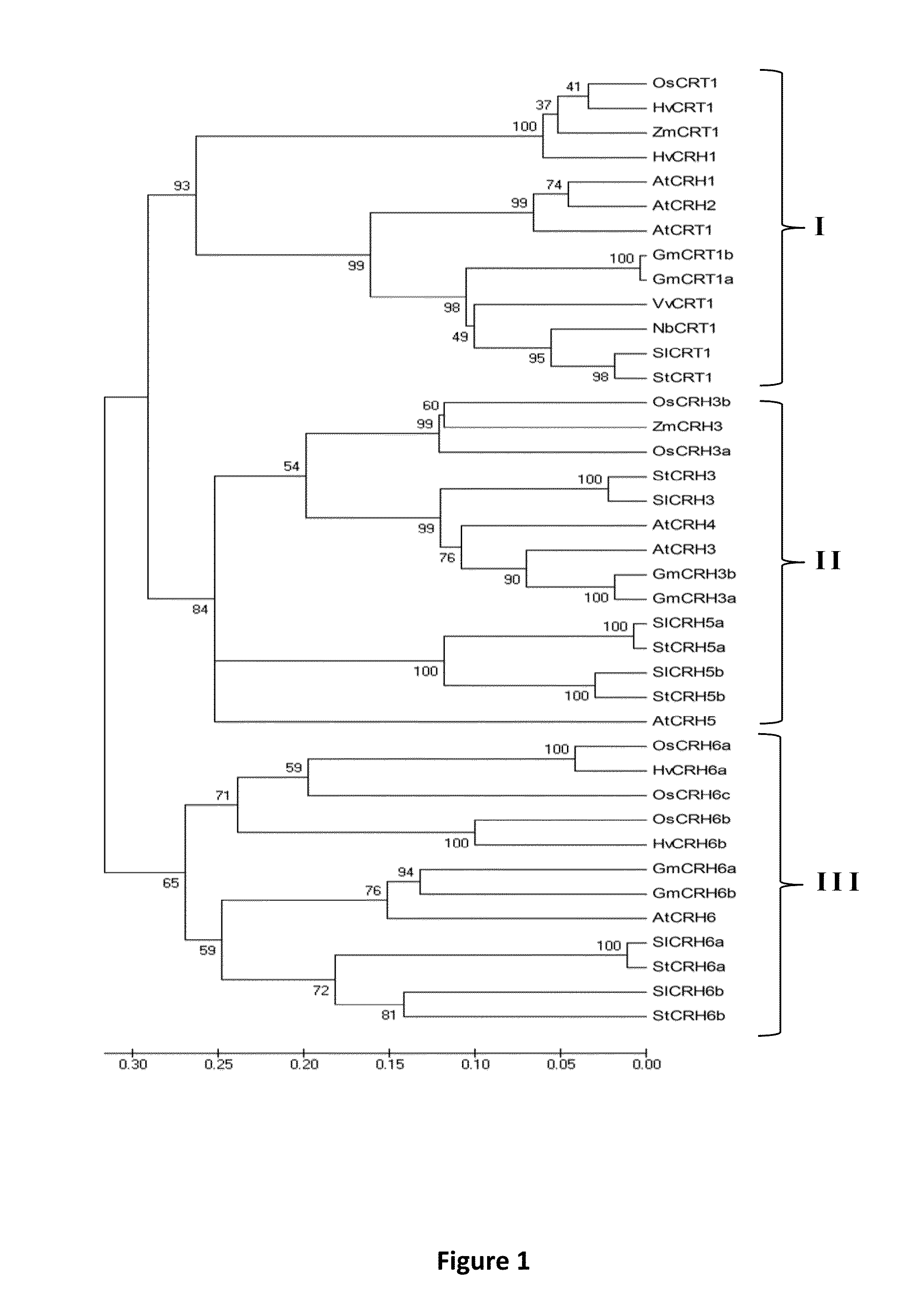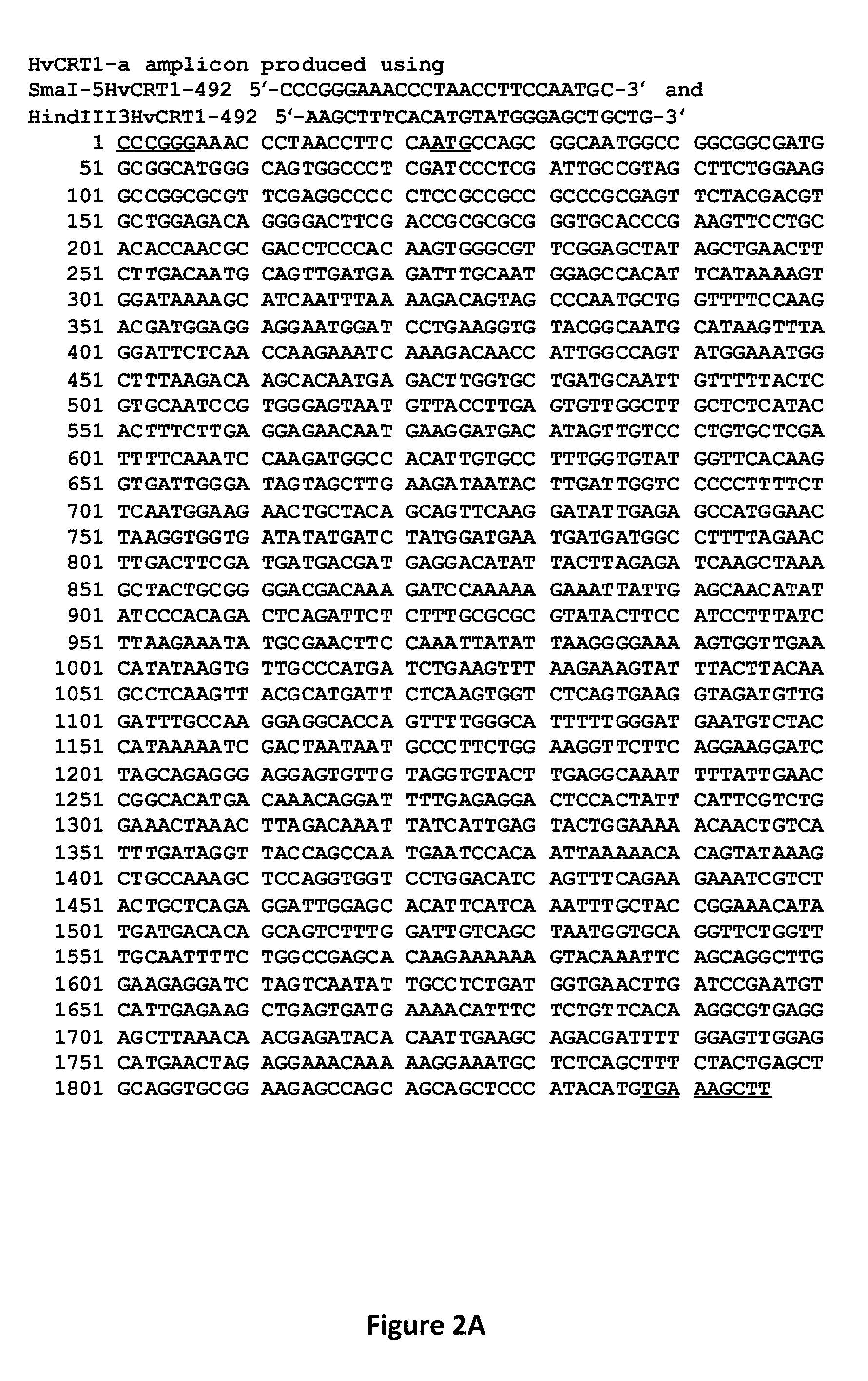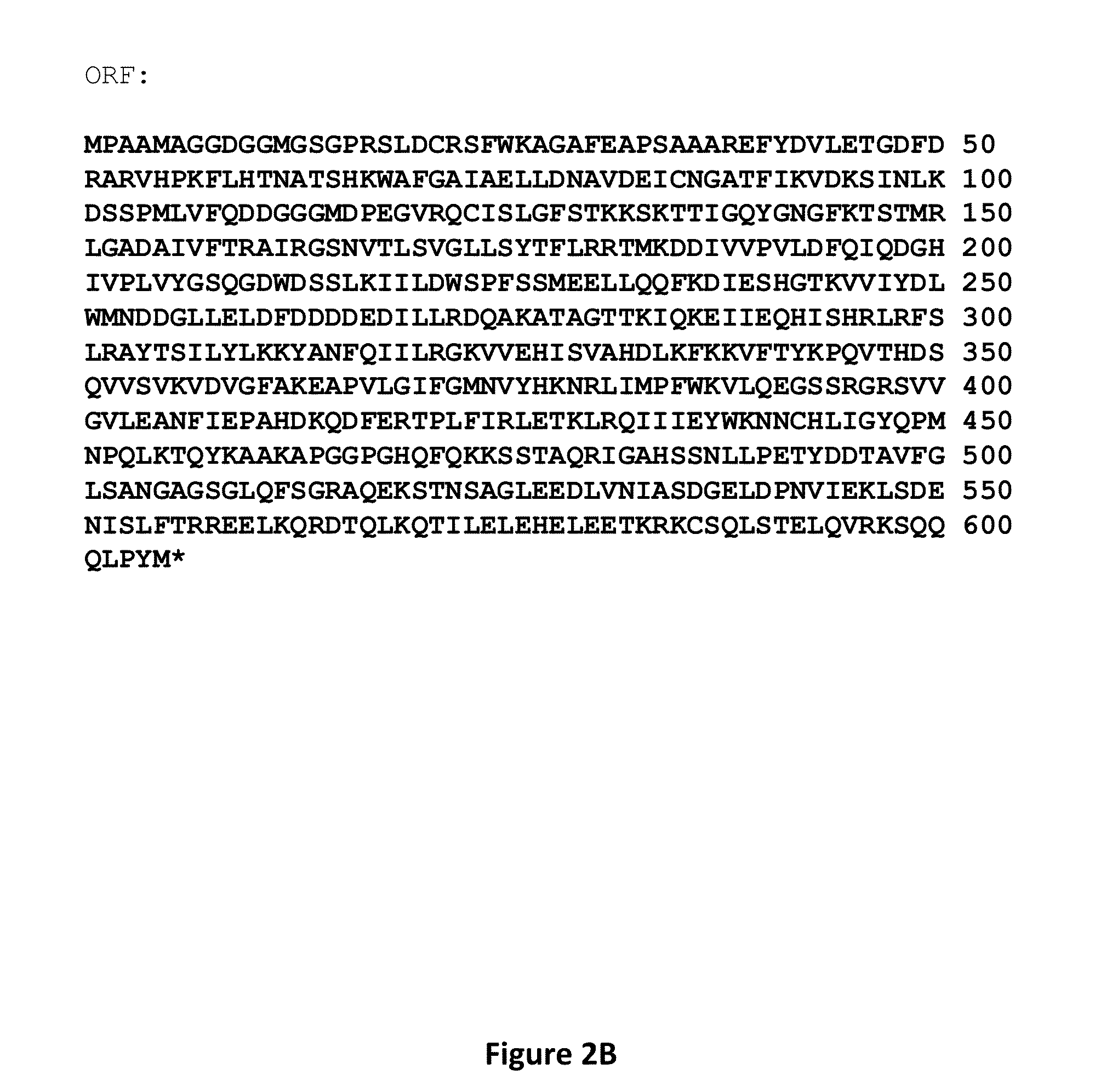Compositions and Methods for the Generation of Disease Resistant Crops
- Summary
- Abstract
- Description
- Claims
- Application Information
AI Technical Summary
Benefits of technology
Problems solved by technology
Method used
Image
Examples
example i
CRT1 Gene Silencing Enhances Disease Resistance in Barley
Isolation of CRT1 Genes in Monocot Cereal Crops:
[0079]To assess the role of CRT1 genes in resistance to Bgh, two complementary approaches were employed—transient over expression of HvCRT1 or silencing of HvCRH1 or HvCRH6 or one of its homologs. Based on fragmentary data from the emerging barley DNA sequence database, four genes were isolated from the barley cultivar Golden Promise. Two genes have high similarity to AtCRT1 (HvCRT1, HvCRH1) and cluster together with the rice and maize CRT1 homologs, OsCRT1 and ZmCRT1, respectively. Two other genes (HvCRH6a and HvCRH6b) have also been identified which show high similarity to AtCRH6 (FIG. 1). The DNA and protein sequences of the novel clone HvCRT1 are shown in FIGS. 2a and b.
Assessment of CRT1 Family Gene Function in Plant Responses to Pathogens:
[0080]To assess the function of CRT1 and its homologs in a crop plant, we used an established assay for transient genetic transformation...
example 2
Assessment of Function of CRT1 Gene Family in Dicot Crops in Response to Pathogens
[0089]Tomato (Solanum lycopersycum) and its close relative potato (Solanum tuberosum) each contain CRT1 and five homologs—three in Glade II and two in Glade III (FIG. 1). Both are important crop species, with potato being the 3rd most important crop worldwide after rice and maize. CRT1's role in resistance to the devastating late blight disease caused by Phytothphora infestans was assessed in RNAi silenced transgenic plants or plants over expressing CRT1 under the estradiol-inducible promoter.
[0090]In tomato, silencing of SlCRT1 enhanced basal resistance to P. infestans (FIG. 14), while its over expression suppressed basal resistance (FIG. 15). In contrast, in potato silencing of StCRT1 suppressed basal resistance to this pathogen (FIG. 16) while its over expression enhanced basal resistance (FIG. 17). These results illustrate the species-specific nature of the effects on disease resistance of modulati...
example 3
Genetically Engineered MORC Proteins and Peptides to Protect Plants from a Diverse Set of Bacterial, Fungal, Oomycete, and Viral Pathogens
[0091]As described in the previous examples and as shown in the Table below, altering CRT1 expression has species specific effects on disease resistance. These differences appear to be due to differences in CRT1 proteins from different plants, e.g., differences in the 2nd linker and CC domain. See FIG. 18.
TABLEArabidopsisPotatoTomatoN. benthamianaBarleyResistanceKnock outOERNAiOERNAiOEVIGSOERNAiOEPTINTETI *NTNTNTNTPTI PAMP-triggered (Basal) ImmunityETI Effector triggered immunity (R gene-mediated resistance)OE Transgenic plants overexpressing CATSRNAi Transgenic plants suppressing CRT1 expressionVIGS Virus induced gene silencingNT Not tested No effect* Modest suppression
[0092]Our data show that the CRT1 protein (a MORC protein) modulates plant immunity to a diverse set of pathogens by playing a positive role in immunity in some species such as pot...
PUM
| Property | Measurement | Unit |
|---|---|---|
| Electrical resistance | aaaaa | aaaaa |
Abstract
Description
Claims
Application Information
 Login to View More
Login to View More - R&D
- Intellectual Property
- Life Sciences
- Materials
- Tech Scout
- Unparalleled Data Quality
- Higher Quality Content
- 60% Fewer Hallucinations
Browse by: Latest US Patents, China's latest patents, Technical Efficacy Thesaurus, Application Domain, Technology Topic, Popular Technical Reports.
© 2025 PatSnap. All rights reserved.Legal|Privacy policy|Modern Slavery Act Transparency Statement|Sitemap|About US| Contact US: help@patsnap.com



